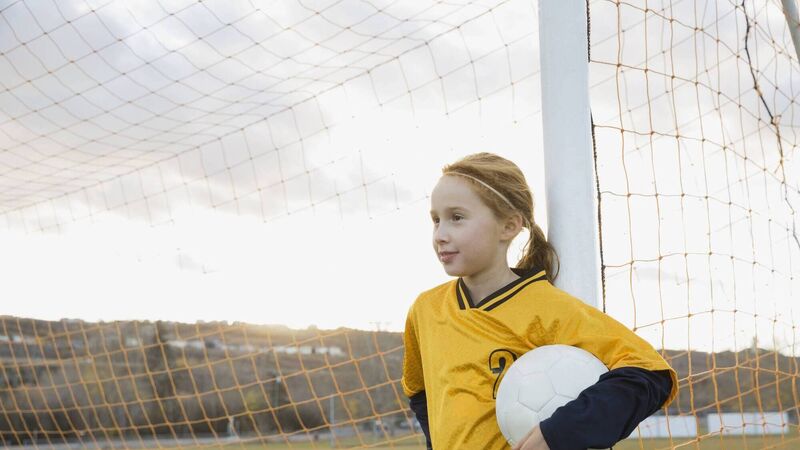Ongoing research shows that sports provide multiple physical and mental health benefits. However, women and girls have long been underrepresented in sporting activities. According to a 2021 Sport Ireland report far fewer teenage girls participate in sports in Ireland than the national average in other countries.
I can see this dynamic emerge in my family as my daughter, who is almost 11, requires considerably more cajoling to attend her weekly sports activities than she did in previous years. By contrast, her older brother can’t get enough time on the pitch.
That young girls are dropping out of team sports is anecdotally well known. But are the reasons well understood and what can we do to prevent this from happening?
The Sport Ireland study, titled Adolescent Girls Get Active,found that girls’ participation in sports plummets during adolescence, with just 7% of girls aged 14-15 meeting recommended daily physical activity levels. Yet, research tells us that girls active in a sport during their teenage years are far more likely to develop a positive life-long relationship with sport and exercise, with significant potential benefits to their overall health and wellbeing.
This is not a new development. When I grew up in the 1980s, I remember my two older sisters constantly badgering my mother to write them notes to get them out of having to do PE classes. However, the same two girls grew up to be women who regularly exercise, one being an avid circuit trainer and the other having completed several half-marathons.
Including sports activities as part of the school day does not seem effective in helping young girls develop healthy or positive relationships with sports. While girls may be self-conscious about engaging in physical activity in front of boys, for example, in mixed-gender school environments, the drop-off rates of girls in sport are pervasive in single-sex schools too, which suggests the current physical education model is not creating a positive relationship with sport for the majority of teenage girls regardless of the gender mix of the school environment.
Taking the focus off results
Adolescence is a critical life stage, and lifelong attitudes and behaviours are established during these formative years. While it is essential to recognise that teenage girls are not a homogenous group and have different needs, desires and levels of maturity, we still need to explore why most of them engage and disengage in organised sport.
The Sport Ireland researchers found that the sports sector in Ireland caters mainly for actively engaged “sporty” girls, but is less effective in recognising the requirements of “non-sporty” or disengaged girls who may need different or adapted pathways and approaches to attract and sustain their interest.
One of the reasons teenage girls said they left sporting activities was the tendency for coaches to focus more time and effort on talented players, who often determine the culture and atmosphere of the team. Also, the more serious players, usually boys or sporty girls, can be vocally critical of those less talented, leading to cliquey behaviour and exclusion.
When the focus is solely on results, the fun element can be considered childish or not serious enough by committed players and coaches. In the Sport Ireland report, inactive girls were more attracted to activities focusing on fun, enjoyment and wellbeing than activities promoting talent. I see this in my daughter, who often mentions how she prefers training to playing matches and always seems to enjoy summer camp culture more than the regular season atmosphere.
The biggest barrier that prevents inactive girls from taking part in sports and physical activity is not feeling good enough. Such girls often have narrow and often negative experiences of a small number of traditional (and dominant) team sports and think this is all that sport is and can be.
Teenage girls told Sports Ireland that they feel too old to start a new sport since most begin when very young and are more advanced by the time they reach their teens, especially in Gaelic football and camogie.
Individual v team sports
Most girls associate “sportiness” with a team and contact sports. Those interested in general exercise do not feel targeted by sporting initiatives such as GAA, soccer and rugby, many of which are popular with boys.
When teens believe they aren’t good enough and their peers and coaches reinforce this, it can leave them feeling ashamed, embarrassed, exposed and isolated, compounded by feeling responsible for “letting the team down”. These intense feelings are amplified by the teasing, embarrassment, and self-consciousness girls already experience during puberty due to their changing bodies. Consequently, “non-sporty” girls tend to gravitate toward individual exercise and non-team-based activities, where no one is relying on them to be the best or judging them for not being good enough.
However, by participating in individual exercise, girls can miss out on the social support and motivation of team sports and find it harder to maintain a regular exercise routine.
Girls need encouragement and reassurance from friends, other players and coaches. They want to feel they belong, and are making a valued contribution, even if they’re not the best player on the team. Taking part should be fun, not fear-inducing. Excuses like lack of interest or being too busy could disappear if engagement were prioritised over performance.
Most beginner classes are aimed at primary school girls, so teenage beginners fall through the gap. It would help if sporting bodies introduced beginner or entry-level classes and activities for teenage girls. A development like this would level the playing field and help the girls to build skills with others of a similar age, feel more comfortable and develop confidence. Furthermore, measures that allow a flexible level of commitment could result in “more girls doing less” instead of “fewer girls doing more”. Such changes cannot come soon enough for teenage girls left on the sidelines.
Next week’s column will explore how we can create spaces for teenage girls designed to meet their needs instead of expecting them to abandon their preferences.
- Dr Colman Noctor is a child psychotherapist
CONNECT WITH US TODAY
Be the first to know the latest news and updates










